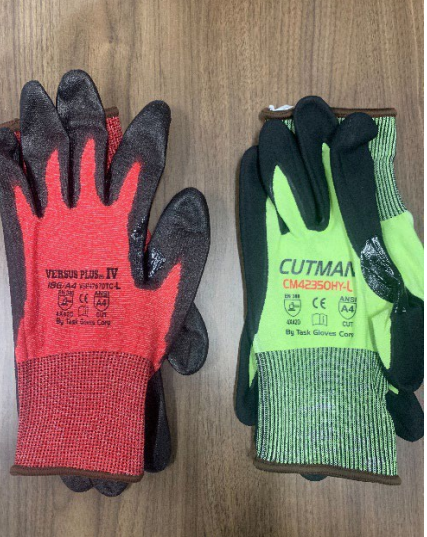Punctures and cuts are common on-the-job injuries. Punctures occur when objects such as splinters, nails, glass, and sharp tools such as scissors and knives pierce the skin and cause a small hole. Cuts occur when sharp objects, including knives, scissors, sharp metal edges, and glass slice through the skin superficially or into the deeper layers of fat, tendons, muscles, and even bone.
The best way to deal with cuts and punctures is to avoid getting them in the first place. Wear appropriate clothing on the job such as sturdy shoes or work boots, long sleeve shirts, and long pants. Consider sturdy coveralls to protect your skin from sharp and flying objects. Wear personal protective equipment (PPE) appropriate to your job tasks such as gloves, safety glasses, work boots, gauntlets, and chaps.
Follow safe work practices and know how to use your tools properly. Inspect, maintain, and replace your tools when necessary. Always use the correct tool for the job. Ensure that blades on cutting tools are sharpened; dull cutting surfaces can cause accidents. When working with sharp tools, always know where both of your hands are at all times. Practice good housekeeping with your sharp and cutting tools by sheathing and storing them properly. Place tools far back on workbenches and shelves, not against the edge where someone walking by might get stuck.
If you receive a puncture or cut on the job, notify your supervisor/safety leader immediately. If you can, gently wash the area with soap and water. To stop bleeding, apply gentle pressure to the wound with clean gauze, cotton, or other absorbent material. When bleeding has stopped, apply an antibacterial ointment and a clean dressing to the wound. If you cannot stop the bleeding, if the wound is very large, or if you are impaled with an object, seek medical attention. Watch your wounds for signs of infection including fever, severe pain, redness beyond the wound edge, swelling, warmth, or pus drainage. Get medical attention immediately if you suspect infection.
If your wound was caused by stepping on a nail or other sharp object in contact with the soil, you may be exposed to the bacteria that cause tetanus. Consider getting regular boosters for tetanus every five to ten years. If your wound was caused by a needlestick, seek medical testing and treatment due to a potential exposure to bloodborne pathogens. Consider a Hepatitis B vaccination if you are exposed to potential needlesticks.
At the Berg Group, A4 Cut resistant gloves are required for all work involving steel, metal, demo or cutting/bladed tools. If you need gloves, please contact your site foremen or safety leader.
Any way you cut it, puncture and cut wounds expose you to pain and potential infection, so avoid them through good work practices!

